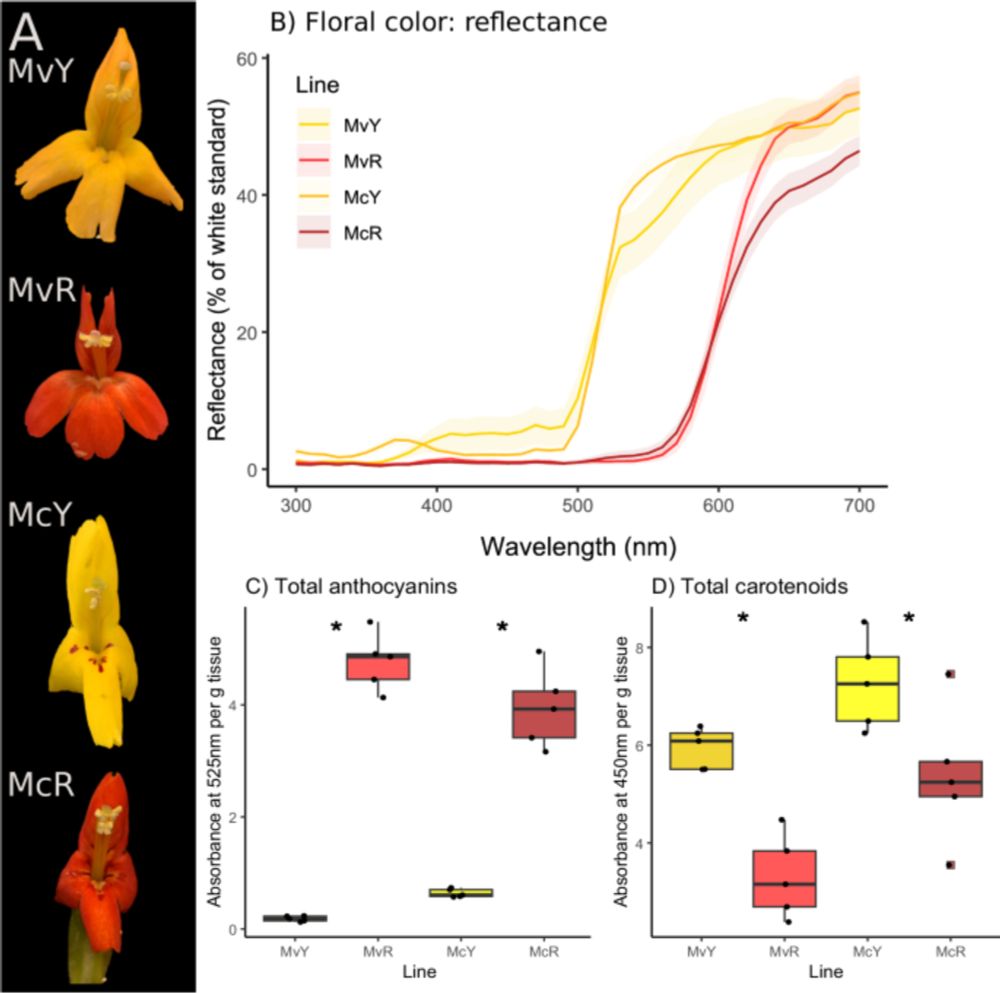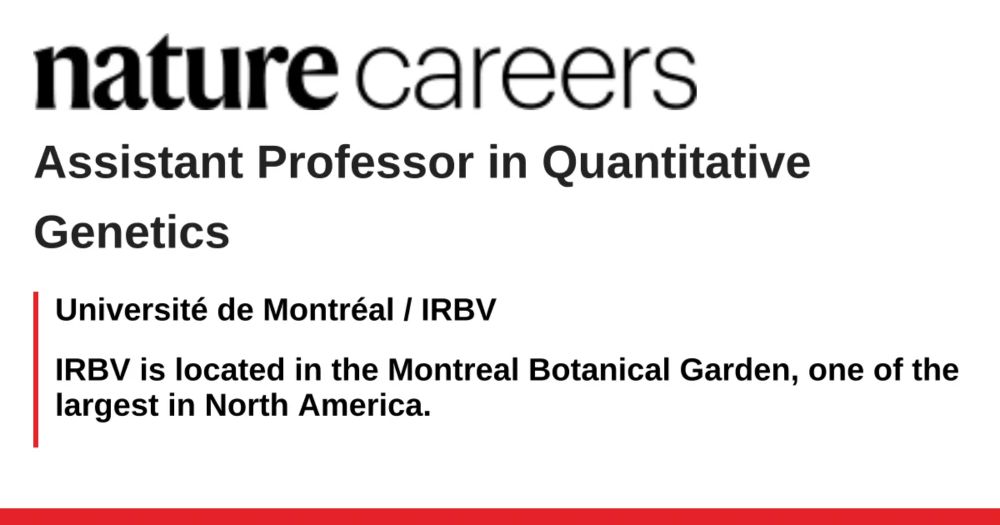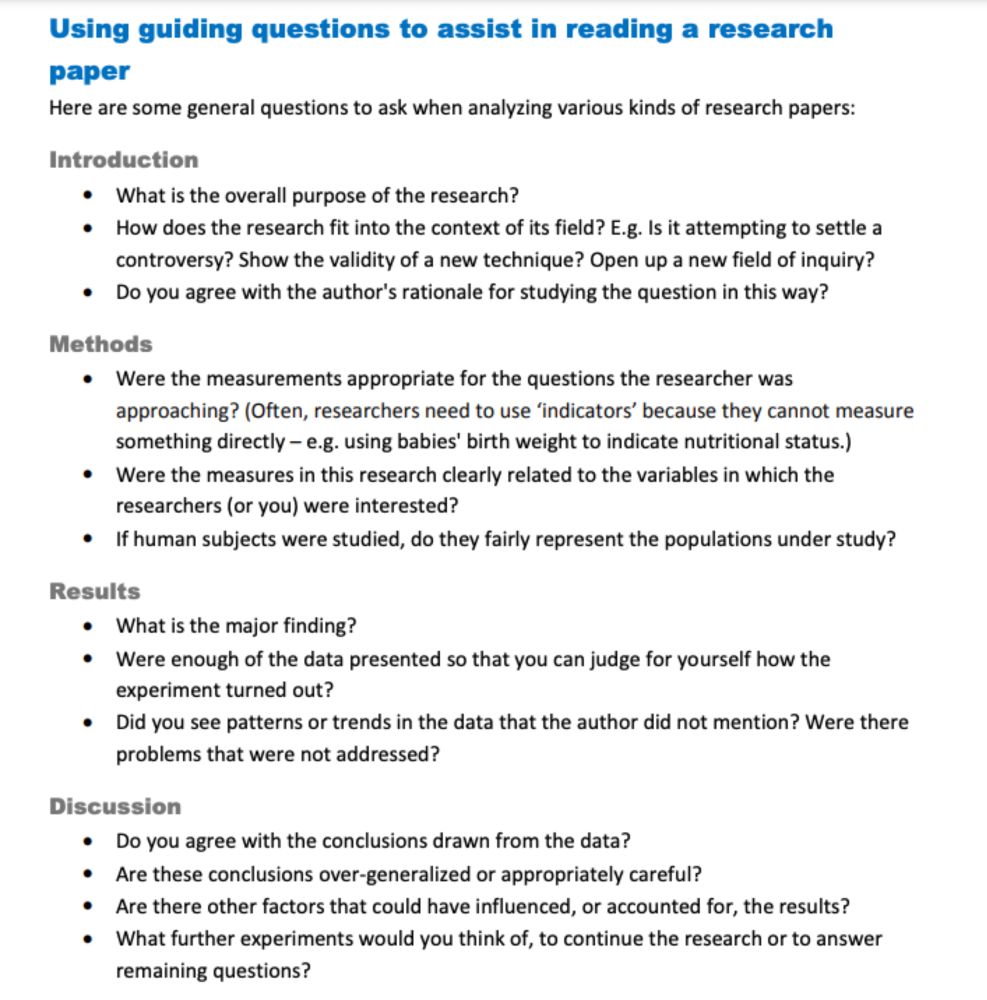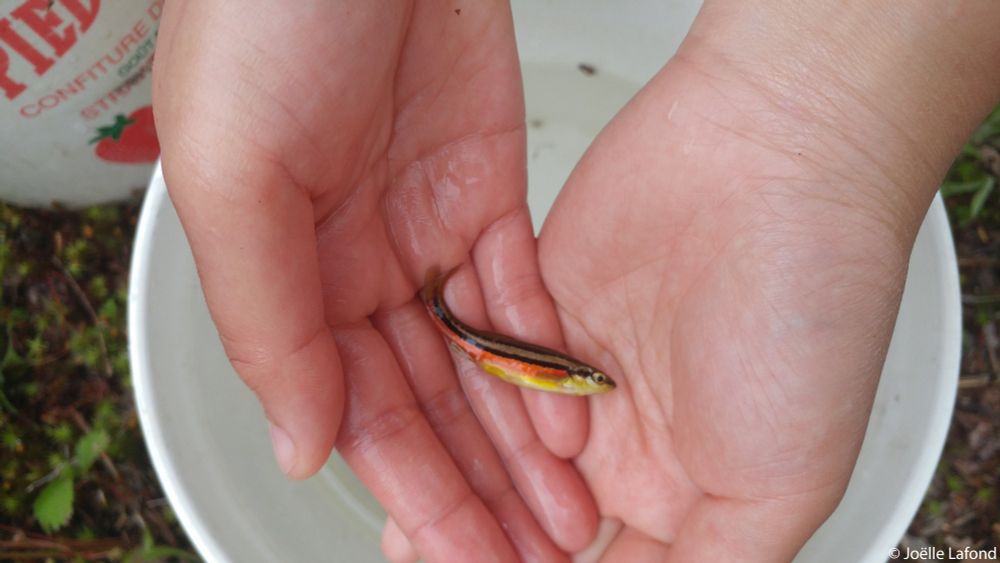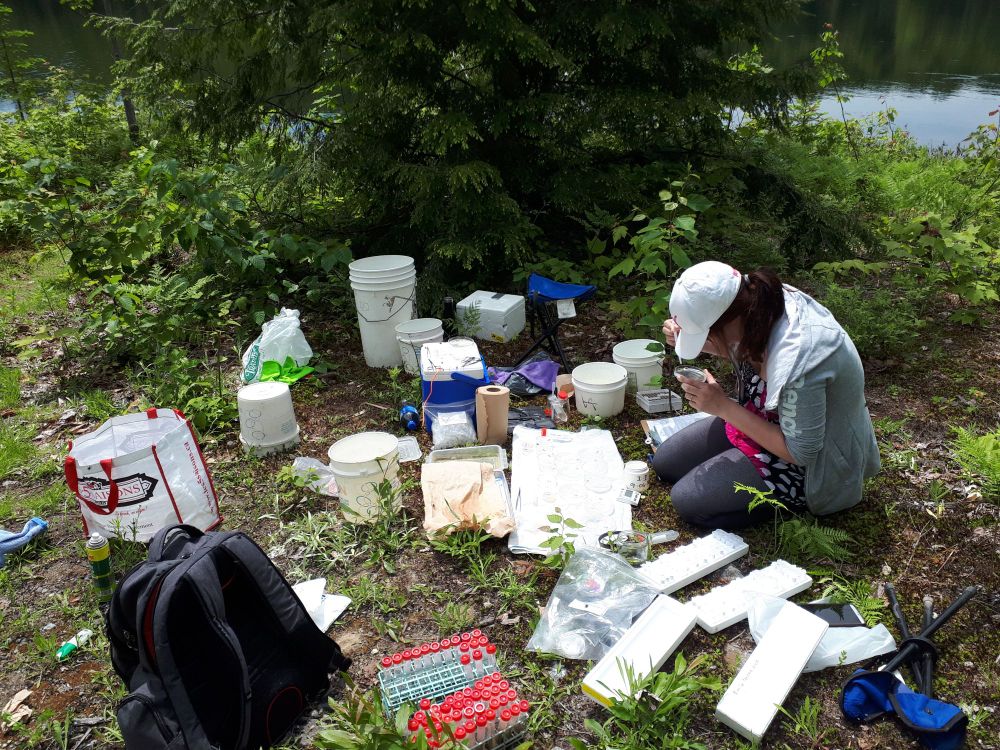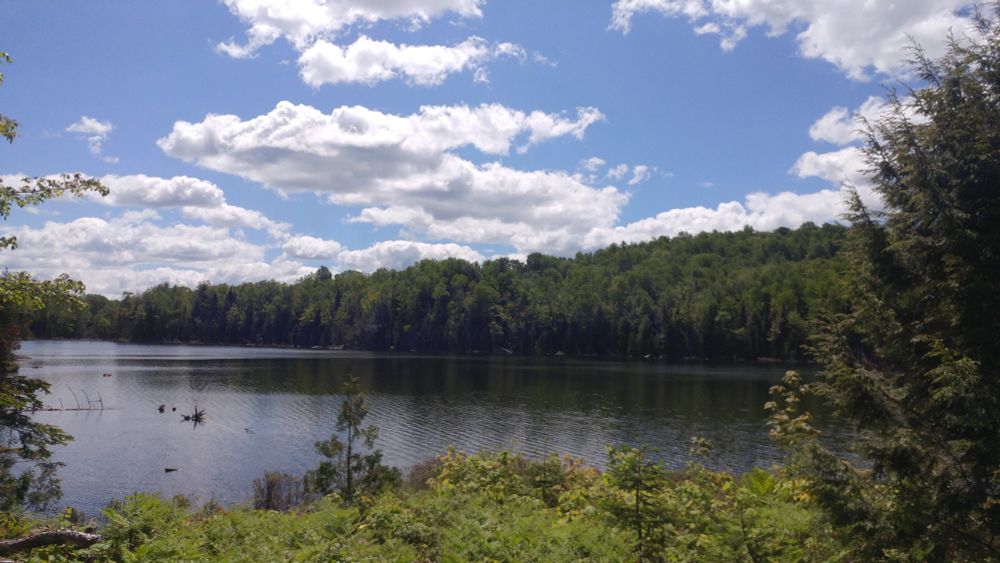
Picture of MEME students on the beach
Do you want to do a Masters in Evolutionary Biology? The call for applying to the MEME program is now open! MEME is a fantastic 2-year MSc between four European Universities on all areas of Evolutionary Biology. Apply and study in Sweden/France/the Netherlands/Germany/USA/Switzerland! www.evobio.eu
24.10.2025 09:04 — 👍 58 🔁 64 💬 0 📌 2
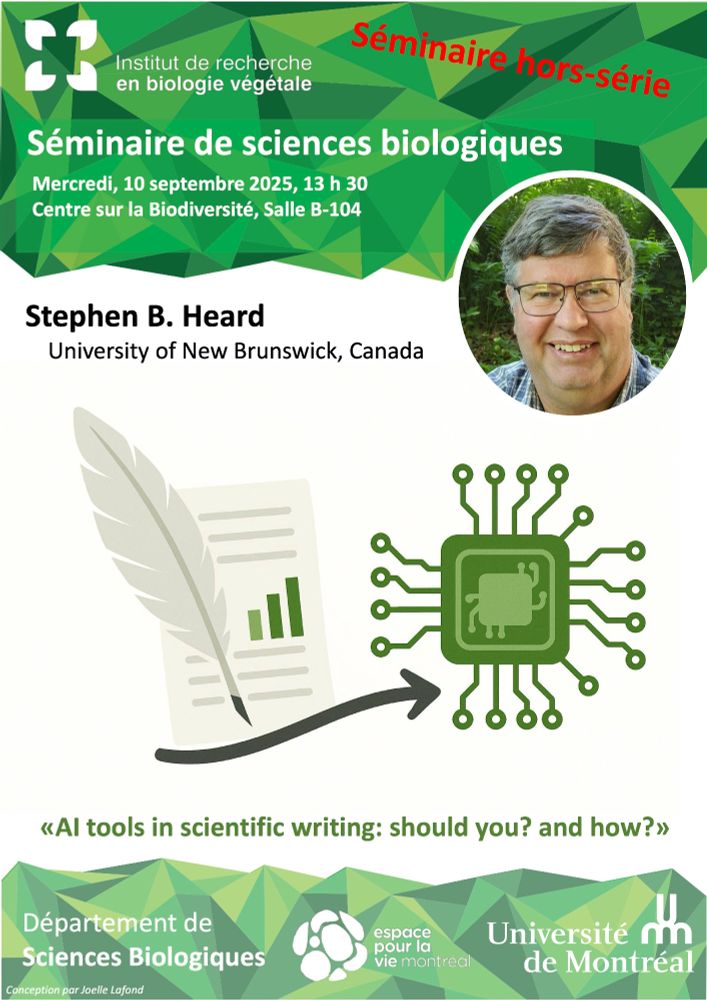
📢 Prochain séminaire // Next conference
AI tools in scientific writing: Should you? And how?
👨🔬 Stephen B. Heard, U New Brunswick
📅 Mercredi, 10 septembre 2025, 13:30
📍 Centre sur la biodiversité, B-104
09.09.2025 01:48 — 👍 1 🔁 1 💬 0 📌 1
Si vous êtes à Montréal mercredi, vous devriez venir écouter le séminaire de @stephenbheard.bsky.social sur l'utilisation de l'IA en rédaction scientifique! 🧪
If you are in Montreal on Wednesday, you should definitely come to @stephenbheard.bsky.social's talk on AI in scientific writing! 🧪
09.09.2025 01:53 — 👍 9 🔁 3 💬 1 📌 0

📢 Prochain séminaire
👩🔬 Silvana Martén Rodriguez, UNAM
🧪 Changing tracks towards the summit: pollination and breeding system shifts along tropical mountain gradients
📅 Mercredi 27 août 2025 à 11h30 à l’IRBV (B-354).
25.08.2025 20:21 — 👍 0 🔁 1 💬 0 📌 0

Beyond the Grant–Stebbins model: floral adaptive landscapes and plant speciation
AbstractBackground. Floral diversity, a striking feature of angiosperm evolution, provides the impetus and rationale for linking pollinator-driven selectio
Is the Most Effective Pollinator Principle a zombie idea? How do plants adapted to one pollinator shift to another without traversing an adaptive valley? How should we measure fitness in pollinator selection studies? We explore these questions and more in a new review doi.org/10.1093/aob/...
08.08.2025 18:10 — 👍 23 🔁 12 💬 1 📌 0
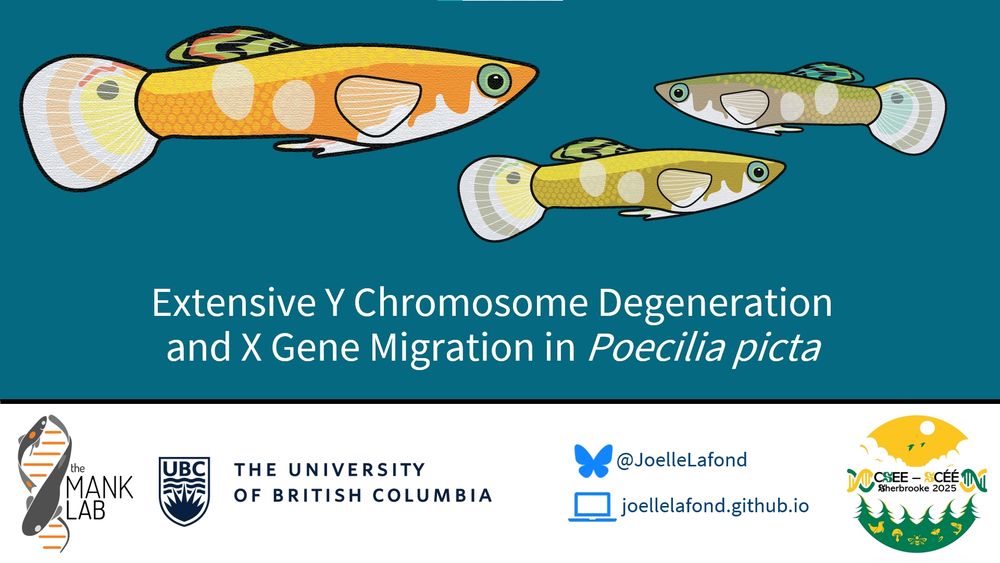
Interested in sex chromosomes evolution and want to wrap up today’s talks on a colorful note? Come see my presentation on guppy sex chromosomes today, July 8th! 🐠
#CSEE2025
⌚16h15, 📍 Lac Memphrémagog
08.07.2025 13:18 — 👍 14 🔁 3 💬 0 📌 0
Hey #CSEE2025 interested in flowers, natural selection, urbanization or any combination of the three?
I’m presenting results of my thesis at 11am today in the urban ecology session (Rivière Coaticook)
08.07.2025 12:29 — 👍 6 🔁 2 💬 0 📌 0
In the field, phenotypic plasticity masked the genetic differences observed in the common garden.
Urbanization influenced flower morphology through both plastic and genetic changes!
This counter-gradient variation means the environment dampens genetic adaptation—making evolution harder to detect!
16.06.2025 13:53 — 👍 0 🔁 0 💬 0 📌 0
Bumblebee size was also positively correlated with the genetic component of sepal size.
This suggests that bumblebee size is a key selective agent acting on Impatiens capensis sepal size
But wait—there’s more!
16.06.2025 13:53 — 👍 0 🔁 0 💬 1 📌 0
The difference in bumblebee size between urban and natural sites wasn’t the same in every city.
Interestingly, the genetic component of sepal size paralleled this result, the variation in sepal size following the one in bumblebee size.
16.06.2025 13:53 — 👍 0 🔁 0 💬 1 📌 0
We combined field and common garden experiments to study flower evolution in natural and urban habitats, disentangling plastic from genetic responses.
We surveyed pollinators and flower morphology of Impatiens capensis in 16 populations across the Quebec, Montreal, Ottawa, and Toronto regions.
16.06.2025 13:53 — 👍 1 🔁 0 💬 1 📌 0
Urbanization alters species richness, abundance, and even evolution—especially of pollinators.
Since pollinators form mutualistic interactions with plants, shifts in their diversity, abundance, or traits can drive selection on flower morphology.
16.06.2025 13:53 — 👍 0 🔁 0 💬 1 📌 0
🚨 My first first-authored paper is out on bioRxiv!
🌆🏵️ Urbanization changed the pollinator community and flower morphology of Impatiens capensis.
🐝 The size of bumblebees—the main pollinators—correlated with sepal size, driving selection for larger sepals in urban populations.
🧵 More below ⬇️
16.06.2025 13:53 — 👍 7 🔁 3 💬 1 📌 2
Je suis heureuse d’annoncer l’obtention d’une bourse postdoctorale du FRQ pour mon projet sur les conséquences de la perte de recombinaison génétique chez les guppys, dans le labo de Judith Mank (UBC)! Je présenterai ces travaux au #SCEE2025 à Sherbrooke cet été – au plaisir de vous y voir!
06.05.2025 19:35 — 👍 5 🔁 3 💬 0 📌 0
If you hate statistics like I do, then you'll love my free lectures. Putting science before statistics, 20 lectures from basics of inference & causal modeling to multilevel models & dynamic state space models. It's all free, made with love and sympathy. 🧪 #stats www.youtube.com/playlist?lis...
19.09.2024 10:56 — 👍 823 🔁 225 💬 28 📌 26
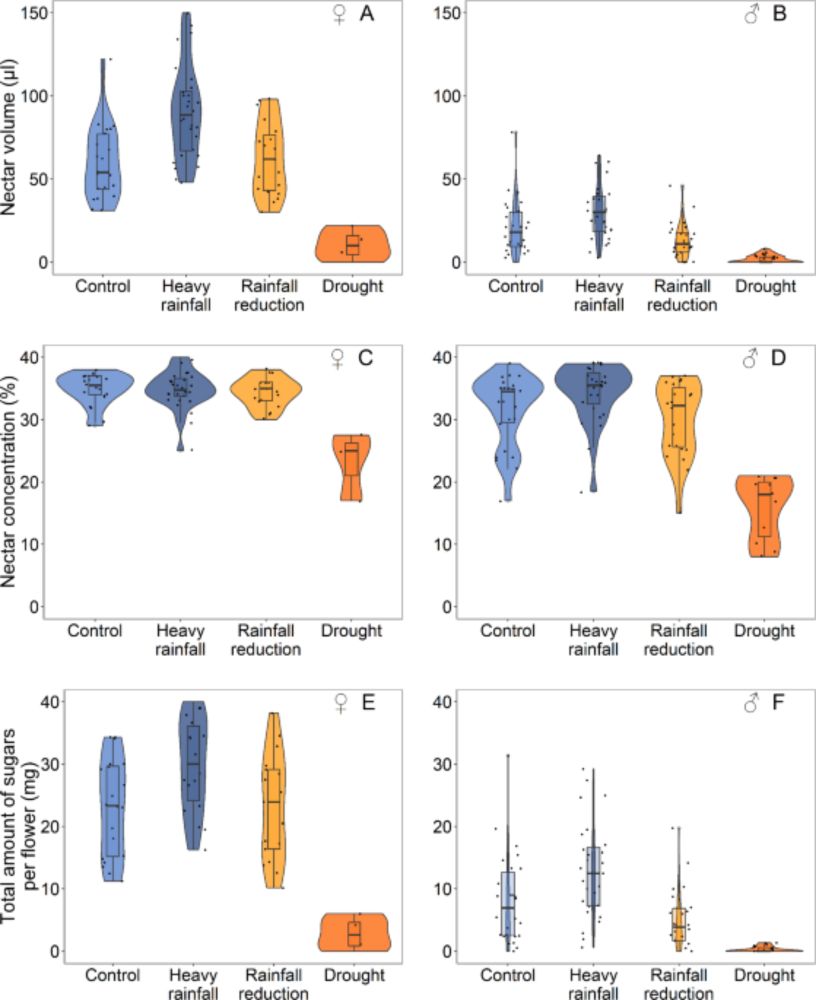
Extreme events induced by climate change alter nectar offer to pollinators in cross pollination-dependent crops - Scientific Reports
Scientific Reports - Extreme events induced by climate change alter nectar offer to pollinators in cross pollination-dependent crops
🌧️🌵 Climate extremes are reshaping the world of pollinators!
A new study reveals that a decrease or excessive increase in water availability can negatively affect the reproductive potential of plant species & pollinators collecting their nectar. 🌍🧪
Learn more: www.nature.com/articles/s41...
14.04.2025 07:29 — 👍 62 🔁 35 💬 0 📌 1

Exciting news! @wcratcliff.bsky.social and I published an essay last week in @nature.com reviewing the substantial contributions of 'long-term' studies to evolutionary biology
www.nature.com/articles/s41...
1/n
25.03.2025 15:45 — 👍 95 🔁 37 💬 1 📌 3
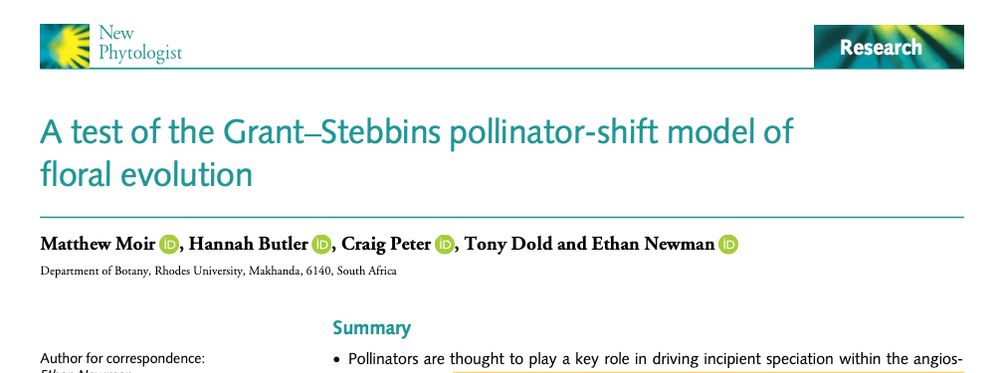
The title of the paper, 'A test of the Grant–Stebbins pollinator-shift model of floral evolution,' published in New Phytologist.
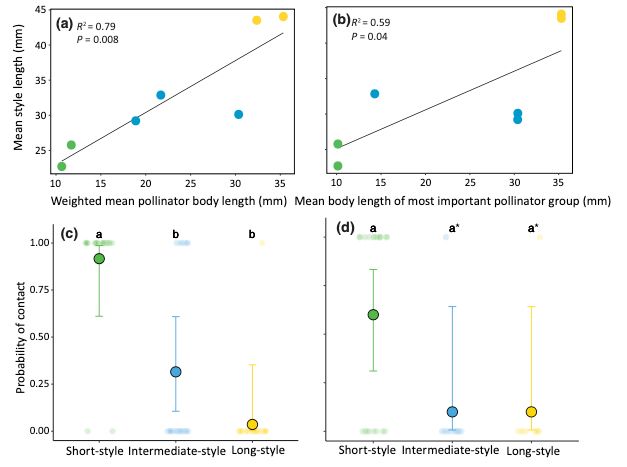
Graphs showing how floral morphology in B. gregaria aligns with pollinator body size and contact probability. The first two graphs show that mean style length increases with pollinator body size (weighted mean pollinator body length and the mean body length of the most important pollinator group). The other two graphs show the probability of contact with floral reproductive parts by ubiquitous pollinators: honeybees contact them more often at short-style sites, while bee flies show no significant difference among sites.
Moir et al. (2025) asked how pollinators drive geographic floral divergence in Brunsvigia gregaria with a generalist pollination system. Style length correlates with the body length of locally important pollinators, highlighting their critical role in floral evolution. #Ecology
bit.ly/4aEqb8u
31.01.2025 13:38 — 👍 2 🔁 3 💬 0 📌 0
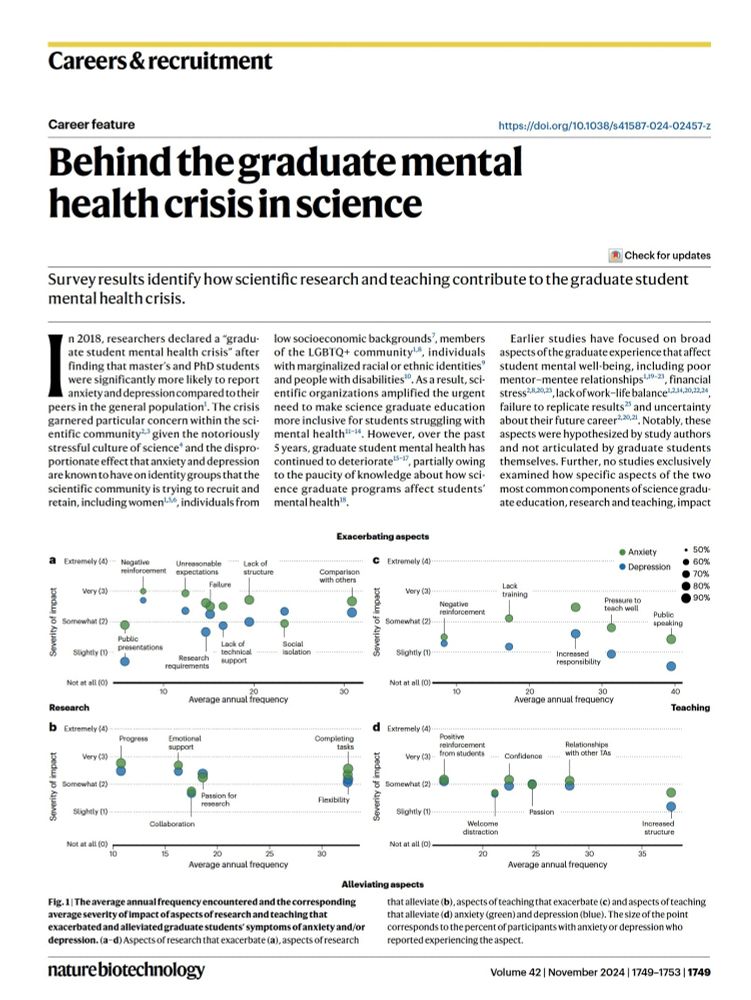
New work reveals the impact of anxiety & depression on PhD students.
"Anxiety and depression can have a substantially detrimental impact on graduate students’ experiences [..] and likely also contribute to increased time to degree and student attrition."
nature.com/articles/s41...
27.11.2024 04:14 — 👍 105 🔁 26 💬 1 📌 3
We’ve put a lot of work into making Bluesky a healthier social network. This app is designed to give you a choice — in what you want to see, what you don’t want to see, and how you want to interact.
Some tips on how to customize your experience:
14.11.2024 22:54 — 👍 7578 🔁 2636 💬 930 📌 292
Hi Brian, thanks for the list. Can I also be added please ?
11.11.2024 13:33 — 👍 1 🔁 0 💬 0 📌 0
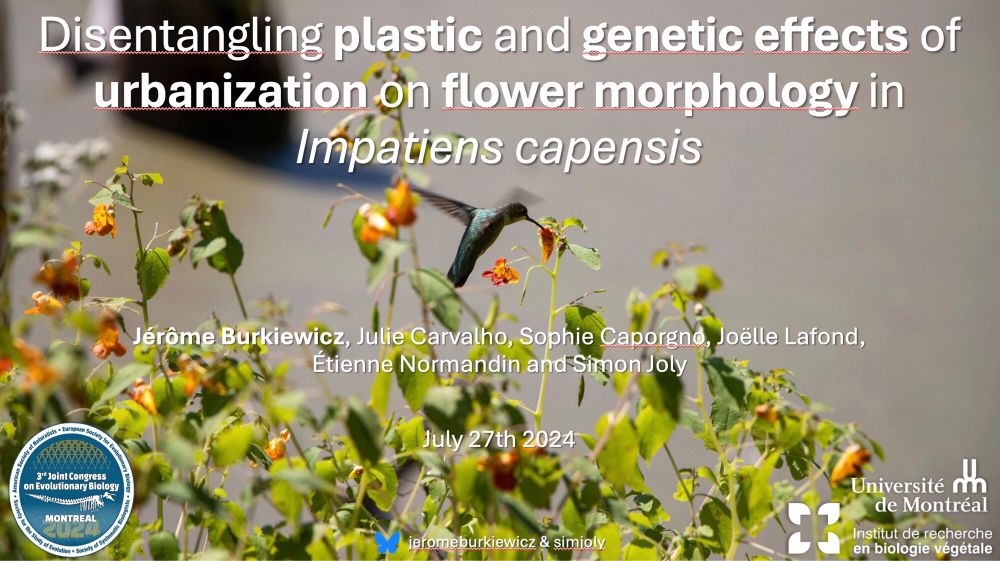
The Joly lab at #Evol2024 today…
Jérôme Burkiewicz (@jeromeburkiewicz) is presenting some of his PhD work on the genetic and plastic effects of urbanization in flower chape of the jewelweed.
📌 4:15, room 525AB (Floral Evolution), Sunday 28th
28.07.2024 11:35 — 👍 2 🔁 3 💬 0 📌 0
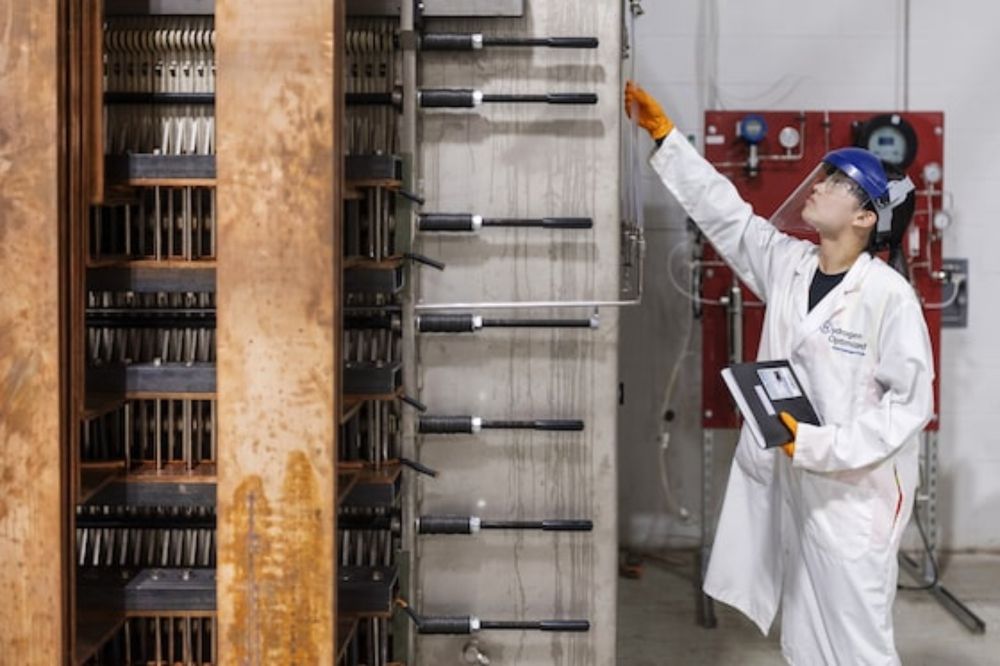
Opinion: Stagnant investments in training and research compromise Canada’s economic growth
Canada invests just 1.55 per cent of gross domestic product in research and development, which pales in comparison to peer countries
Stagnant investments in training and research compromise Canada’s economic growth
Read this new commentary (and see the numbers) written by Professor Marc Johnson, Chair of our Board of Directors, in @theglobeandmail.com:
www.theglobeandmail.com/business/com... #SupportOurScience
05.02.2024 15:09 — 👍 2 🔁 6 💬 0 📌 0
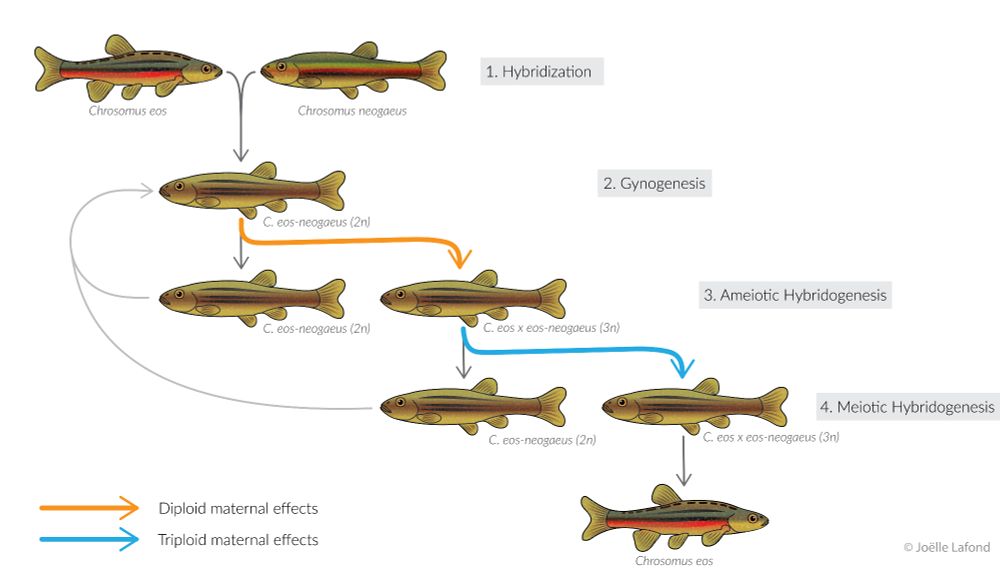
Cycle of reproduction of the hybrid C. eos x eos-neogaeus as we now know it, where maternal ploidy dictate whether the progeny reproduces sexually or asexually.
New paper alert! ✨
Mothers dictating how to reproduce? How weird! In a hybrid fish, however, that is the reality!
Check how maternal ploidy governs gonadal development into producing either sexual or asexual oocytes, all that in our new paper linked below!
t.ly/hSUX8
23.01.2024 18:51 — 👍 5 🔁 2 💬 0 📌 0
Urban Forestry Prof @ulaval.ca | Applied & transdisciplinary research on #UrbanForests 🌳 & #Soils | #ResilientCities #Climate | Studying human impacts | Bridging science, policy & practice | #SciComm | 📸, #HikingTrails & travel 🇨🇦 www.jananisivarajah.com
PhD candidate at Bielefeld University 🇩🇪 studying how urbanization shapes social behaviour in lizards 🦎🏙️
Ecology researcher
Interested in pollinator ecology and wild bee taxonomy
Scientist, professor, mom, trail runner, plant lover. UC Santa Cruz.
Evolutionary ecologist exploring microevolution and plasticity in wildlife populations. I lead the research lab at African Lion Safari.
https://www.researchgate.net/profile/Drew-Sauve?ev=hdr_xprf
https://sites.google.com/view/sauve-drew/home
PhD candidate at UofT studying ecology and evolution in cities 🌱🏙
PhD candidate in biology at @McGillU. Evolutionary ecology and climbing rocks.
Incoming assistant professor @USherbrooke, currently @UCalgary, interested in #FunctionalTraits, #Communities, #Cities. Reader. Opinionated. Curious about most things...
Biology Professor & Associate Dean @UWindsor. I use bioacoustics to study ecology, evolution, and conservation. Husband & father. Proud Canadian 🇨🇦. I post about our team's research adventures. www.uwindsor.ca/dmennill
Postdoctoral Fellow at Mount Allison University studying freshwater turtles. 🇨🇦
Conservation | Urban Herpetology | Endangered Turtle Research | Aquatic Ecology
Scientific illustrator and wildlife artist.
Former scientist - biologist
Commissions: lazaroillustration@gmail.com
Prints store: https://www.inprnt.com/gallery/javi_lazaro/
Web: https://www.lazaroillustration.com/
Human artist. No AI art.
We work on planetary problems. Currently: counting climate change-related deaths; pandemic risk assessment in a changing biosphere; data, science, and vaccine access during public health emergencies. 👉 carlsonlab.bio
evolutionary/population/community ecologist
associate professor at NC State
Interests: 🧉🌱🏃🏾♀️🐦⬛🎶🏔️🏜️
www.seemasheth.weebly.com
she/her
views my own
PhD student at UofT studying how plants evolve in urban environments
Promote conservation education, outdoor recreation, and environmental literacy. We serve our members, the Twin Tiers community, and all visitors to our collection of nature preserves. (Border counties of Central New York and Pennsylvania.)
Assistant professor in the PMB Department at UC Berkeley. Stanford Alum. #FearTheTree yangonglab.com
From 🇨🇴 to 🇺🇸 to🇨🇭to 🇨🇦. 🧪
Assistant Prof. Ecology, Macroecology. Tweets english & spanish & french #CienciaCriolla #WomeninSTEM #MujerEnCiencia #LatinasinSTEM. thepazlab.com








